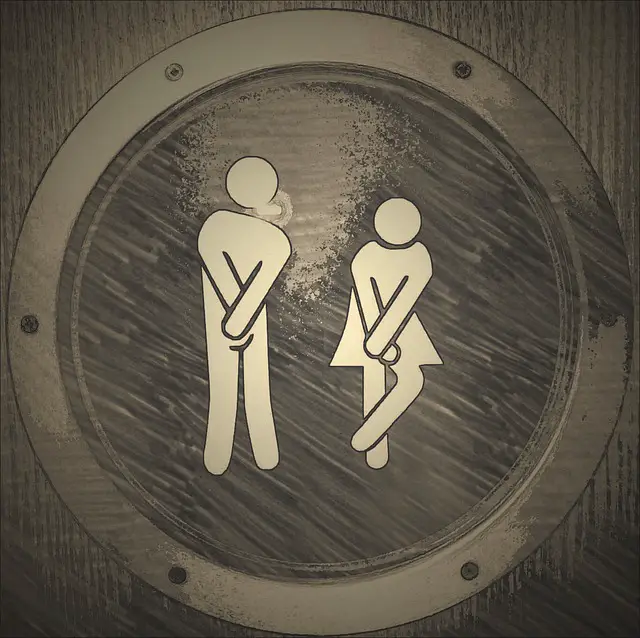I was always wondering how it’s possible that tennis umpires don’t take breaks.
They spend hours on court officiating and never go to the toilet. Don’t they need to, or are there any rules which disallow them to leave the premises?
Many times in my life, I saw line umpires being replaced or going out of court for emergency reasons. It happens when they accidentally get hit with the ball, usually on the serve or return.
Officially, tennis umpires can go to the toilet. But to keep the flow of the match, they avoid taking any unnecessary breaks. While the linesmen work in rotational shifts, the chair umpires must take a break to leave the court.
Generally, except for regular time-outs on changeovers, each unplanned break has to be notified by a player and/or approved by the chair umpire.
This rule relates to everyone on the court, including line umpires.
Are There Any Bathroom Break Rules In Tennis?

Like in any other sport, you can go to the bathroom during the tennis match.
But the number of toilet breaks may differ. The rulebooks of men’s and women’s tennis associations say precisely when and how often you’re allowed to leave the court.
In men’s singles, you can take one toilet break in a best of the three-set match and two toilet breaks during a best of the five-set match.
In a situation, your opponent takes a toilet break first, and you go out of the court too, you both use your individual toilet breaks.
Women’s tennis matches are only played in a best of three formula. So, like men, they have a right to one toilet break as well.
But, until the end of 2018, women could go to the toilet even twice a match.
Regardless of gender, your team is entitled to two toilet breaks in total in any doubles match.
If you decide to take a toilet break, you and your partner can leave the court simultaneously, and it counts as one of the team’s breaks.
Basically, a toilet break should be taken on a set break, and you’re not allowed to use it for any other purpose.
Another request can be accepted, but it’s very risky.
If you go to the toilet on a changeover break, you are limited to as little as 90 seconds. If you’re late and interfere with the match, the chair umpire will penalize you for a delay.
The toilet break duration isn’t specified by the rules but should last a reasonable time.
However, a chair umpire has the power to refuse you to take a toilet break if they suspect unfair intention.
This topic has been a subject of argument for years. Players, who are on the way to losing, tend to intentionally use toilet breaks to knock the opponents off stride.
Meanwhile, there are no regulations that would limit or forbid the umpires to go for a toilet break. The line umpires must ask for permission from the chair umpire though.
Why Don’t Chair Umpires Take A Bathroom Break?

It doesn’t often happen to see the chair umpire leave for a bathroom break.
There is a simple reason for it.
Such a nuisance could affect the course of the match, distract players and make the audience impatient. So, the umpires stay on the court as the match continues.
You will better understand it if you bear in mind that tennis is also a very psychological game.
Let’s say you were 0-5 in the final set, and suddenly you’re playing the best tennis ever. Then, you win 4 games in a row, and your opponent is completely devastated.
Nothing would stop you now. But the chair umpire takes a break and ruins your impressive streak. The rival is given a chance to refocus and serves 4 aces.
He wins the match.
That is why the chair umpire’s role is to judge and do their best to minimize match disruptions.
Perhaps, the only moment the chair umpire is likely to go to the toilet is when both players in singles and all four players in doubles would leave the court.
Say, it’s their toilet break, a medical break, or a match suspension.
Can Line Umpires Take A Bathroom Break?

The line umpires are more privileged in this matter.
If they are assigned to tournament matches whatsoever, they work in rotational shifts.
At Wimbledon Championships, two teams of linesmen spend 60 minutes on the court and 60 minutes resting by turns.
Theoretically, any line umpire could take a bathroom break, but it would bring confusion. So even if they wanted, they mustn’t leave their spot just like that.
After all, the line umpires work under the supervision of the chair umpire, so they need to get approval.
Interestingly, while the linesmen don’t go to the toilet themselves, they have to assist the players on their way to the bathroom.
This is to ensure that players don’t use the break for other purposes.
If so, the line umpire is obligated to report it to the chair umpire.
Final Words
A tennis match’s length is unpredictable. You can only guess how long it will last by comparing players’ abilities, rank, or current form.
Men’s matches are longer even though the rallies last relatively short.
In women’s tennis, it’s the other way around. They hit the ball more times during one point, but the matches are shorter in general.
In the last unrestricted season before the pandemic, in 2019, Rafael Nadal played 68 matches. His average time spent on the court was 120 minutes per match.
The same year, a Japanese female player, Naomi Osaka, spent 96 minutes on the court in her 50 matches.
These numbers show that, on average, the chair umpires have to stay in their seats for at least 90 minutes on women’s matches and 120 minutes on men’s matches.
But it’s nothing certain anyway. One may be a judge for less than an hour, while others will be forced to officiate for three, four, or more hours.
From what you see on TV and my personal experience with tennis umpires, they don’t go to the toilet unless it’s a matter of life and death.
They should be appreciated for their commitment. And the contribution to keeping players the leading characters of the show is invaluable.
Do you think the chair umpires should go to the bathroom whenever they need to?
Has your match ever been affected by the chair umpire’s behavior?

